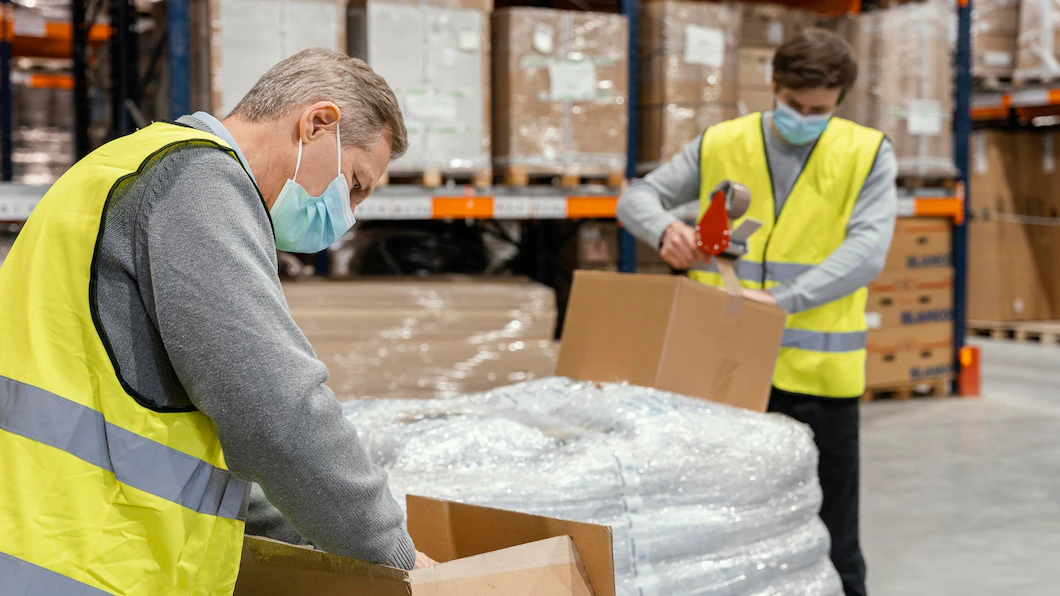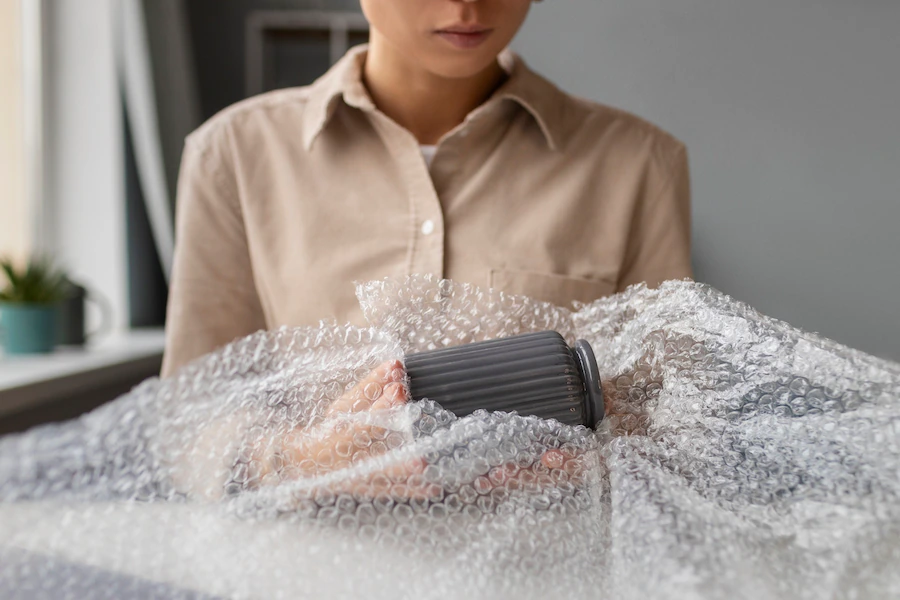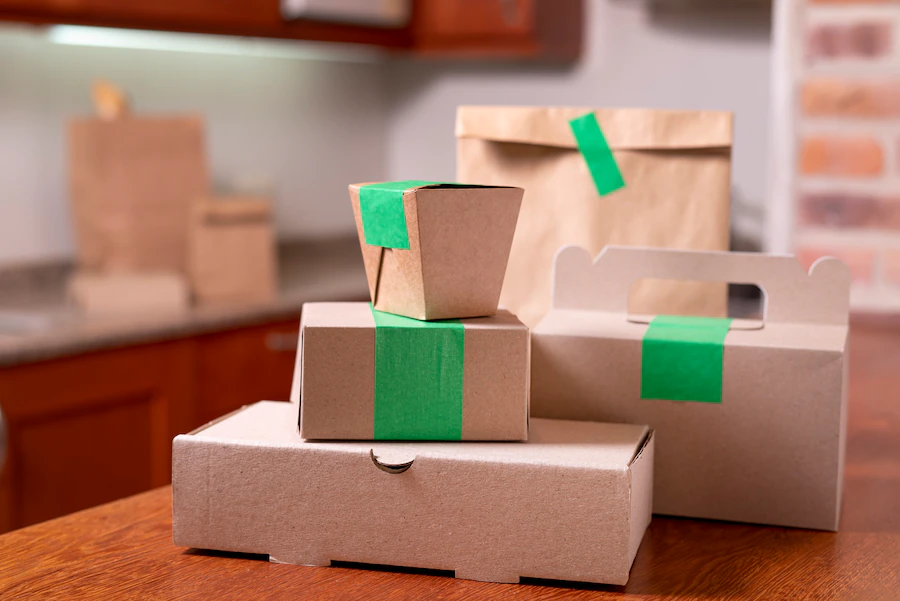Getting Your Shipments There Safely: A Guide To Protective Packaging Materials
4 Mins Read
Published on: 07 September 2023
Last Updated on: 17 July 2024

toc impalement
Nothing can ruin your day quite like opening up a delivered package only to find the contents broken or damaged. Proper protective packaging is essential to prevent this disappointment and financial loss.
Choosing the right materials to safeguard your shipments can seem overwhelming with so many options like bubble wrap, foam, and multi-depth corrugated boxes. However, having the right knowledge helps ensure your products arrive safely at their destination intact.
This article will provide an overview of common protective packaging materials and tips for selecting the optimal solutions tailored to your specific products and shipments.
Whether you need lightweight cushioning bubble wrap for fragile items or sturdy corrugated boxes to protect heavy equipment, we’ll explore all the packaging choices available to keep your shipments secure from warehouse to doorstep. With the right protective packaging, you can ship with confidence knowing your deliveries will arrive safely.
Popular Protective Packaging Materials
Bubble Wrap

Bubble wrap is composed of air-filled bubbles lined up between two layers of plastic film. The bubbles provide cushioning and shock absorption to protect contents from damage. Bubble wrap comes in small, medium, and large bubble sizes to fit different packing needs.
It’s lightweight and adaptable so it can conform to products of many shapes and sizes. Bubble wrap is also reusable if undamaged. However, it can take up considerable space during shipping and storage when not in use.
Additionally, bubble wrap is not very eco-friendly since the plastic film is challenging to recycle. But bubble wrap excels at protecting all kinds of fragile items like glassware, ceramics, electronics, appliances, and other breakable objects during shipping. The bubbles absorb shocks and impacts to prevent cracks or dents.
Foam
Foam packaging includes materials like molded foam cushions and foam sheets or pouches. It offers extremely protective and custom-fit cushioning for delicate items. Foam can be pre-molded into shapes that grip objects securely or cut into inserts or blocks.
This prevents shifting and rubbing during transit. However, foam is more expensive than other cushioning options and usually not reusable or recyclable. Foam packaging works best for high-value, fragile products that require maximum protection like antiques, artwork, sculptures, electronics, and more.
Types like polyurethane foam provide excellent cushioning while being lightweight. Wrapping foam pouches or cushions in an outer layer of stretch film wrap helps secure it tightly while in transit and adds stability.
Read Also: What You Can Expect with a Contract Packing Service: Your Main Questions Answered
Inflatable Air Pillows
Inflatable air pillows provide cushioning through small air pockets that absorb shocks. They can be inflated on demand using hand pumps or compressed air, saving storage space. Air pillows come in various sizes to fit gaps within packages and prevent items from shifting during shipment.
They’re lightweight and convenient to use. However, air pillows can easily be punctured and leak if not protected. They work best for filling empty spaces around products inside boxes and providing a final layer of cushioning around the contents.
Insulated Shippers

Insulated shippers keep contents at specific temperatures during transport. They use thick insulative materials like EPS foam or vacuum-insulated panels to maintain interior conditions. Some even contain phase change materials or loose fill insulation for thermal stability.
Insulated containers are essential for shipping temperature-sensitive pharmaceuticals, biological samples, foods, and other perishable items at controlled temps. They can be passive with just insulation or active with cooling or heating units. Sturdy insulated boxes with packing tape dispensers help secure the contents inside.
Corrugated Cardboard
Corrugated cardboard is one of the most common packaging materials, used to make shipping boxes and inserts. It consists of a fluted corrugated sheet sandwiched between two flat linerboards. The layers cushion contents while the grooves add strength and flexibility. Corrugated cardboard is lightweight yet durable, recyclable, and available at low cost.
It can be cut to make custom boxes, dividers, and padding. However, cardboard offers minimal water resistance. Exposure to moisture can reduce its structural integrity. Still, it excels at everyday packaging needs for dry goods and products not requiring high-performance cushioning. Corrugated cardboard boxes provide economical, versatile protection for all kinds of shipments.
Choosing The Right Packaging
Selecting appropriate packaging is crucial for protecting items during shipping and transport. Consider the product’s weight, fragility, shape, and sensitivity to temperature, moisture, or other hazards. Analyze the potential risks it may encounter in transit like drops, shocks, compression, vibration, etc.
Match the packaging method and materials to mitigate these hazards according to the item’s specific requirements. If uncertain about packaging performance, conduct testing first using lab drop tests or vibration analysis. Follow best practices like using the correct box size, fill rate, and cushioning thickness.
Use suspension packaging like foam, air pillows, or crumpled paper for more delicate items to prevent direct contact with the box walls. Double box heavy products with a spacer between the inner and outer boxes. Tape vulnerable edges and seams securely using quality packing tape dispensers.
Mark boxes clearly with fragile stickers and arrows pointing up to indicate proper orientation. Include desiccants or oxygen absorbers if needed to control moisture and maintain product shelf life. Take steps to stabilize and immobilize the contents to prevent shifting. With careful packaging selection and execution, you can effectively protect your shipments from harm during handling and transportation.
Conclusion
In short, selecting appropriate protective packaging tailored to the product and shipment is crucial to prevent damage and loss. Testing packaging first provides added assurance of its effectiveness. When done right, proper packaging safeguards contents from potential hazards during handling and transportation.
Read Also:


















Comments Are Closed For This Article